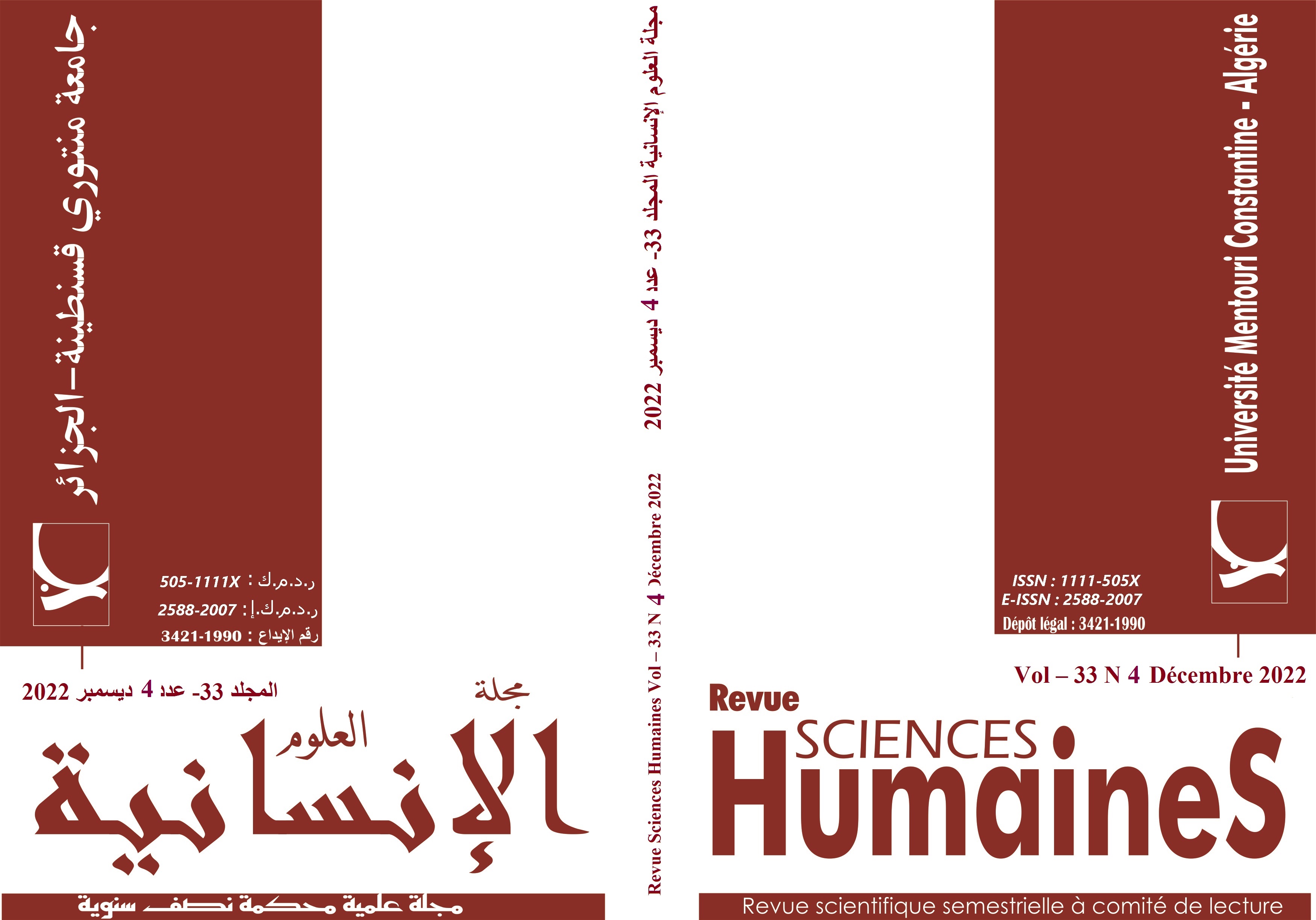الدلالات النفسية للرسم الحر من خلال رسوم المراهقين
الكلمات المفتاحية:
الرسم الحر، المراهق، الخصائص النفسيةالملخص
لقد أجمع معظم الباحثين أن الرسم سلوك يختص به الإنسان وحده دون غيره، والرسم لا يعني أنه إنجاز عن طريق حركات اليد فقط ولكن هو الرغبة في ترك بعض الآثار على مساحة الورقة، إن هذه الرغبة تضيف إلى الفعل الحركي، البعد الرمزي للرسم، فلكي يرسم الطفل لابد أن يمُّر من وضعية الرغبة إلى وضعية الفعل. فالصورة الذهنية التي يُكوَّنها قبل أن يرسم هي التي تقوده إلى تنفيذ رسمه وإنجازه ومن دونها يستحيل تحقيق ذلك.
إن رسومات المراهق بقدر بساطتها وتلقائيتها في بعض الأحيان، يجد فيها الباحث معينٌ لا ينضب من الحقائق والدَّلالات التي تعينه على فهم سيكولوجية هذا المراهق خصائصه وصراعاته وحاجاته. فعن طريق الرسوم يمكن للمراهق أن يتعدى العوائق اللغوية والتعبيرية التي يمكن أن تحدُّ من قدرته على التعبير، وتعتبر شكل من أشكال الأداء النفسي له خصائص متعددة سواء من ناحية المجال المعرفي أو المجال الوجداني. لهذا قمنا بتطبيق الرسم الحر على بعض المراهقين للكشف عن خصائصهم النفسية.
التنزيلات
المراجع
- عبد الوافي زهير بوسنة، تقنيات الفحص الاكلينيكي، مخبر التطبيقات النفسية والتربوية، جامعة منتوري قسنطينة، دار الهدى للطباعة والنشر - عين مليلة- الجزائر، 2012.
- لويس كامل مليكة، دراسة الشخصية عن طريق الرسم، الكويت، (ب س).
- مالك بدري، سيكولوجية رسوم الأطفال-اختبار رسم الانسان وتطبيقاته على أطفال البلاد العربية ، دار الفرقان، ط2 عمان الأردن، 1997.
- نعيم عطية ، ذكاء الأطفال من خلال الرسوم ، دار الطليعة، ط1 بيروت لبنان، 1982.
- كريمة علاق، محاولة تقنين رسم العائلة باستخدام تقنية رسم العائلة المتخيلة والحقيقية، مذكرة لنيل شهادة دكتوراه غير منشورة، قسم علم النفس و الأرطفونيا وعلوم التربية جامعة وهران، 2012.
- قابلي حنان، الدينامية الابداعية للطفل المصاب بالسرطان دراسة عيادية باستعمال الرسم الحر واختبار تفهم الموضوع، مذكرة ماجستير غير منشورة، قسم علم النفس التربية جامعة مولود معمري تيزي وزو، 2011.
Royer (J) ; Dessin du bonhomme : la personnalité de l’enfant dans tous ses état ; Paris les éditions psychologique; 2011.
Stora (R) ) ; Etude historique sur le dessin comme moyen d’investigation psychologique ; Bulletin de psychologique presses de l’univer de Paris V; 1996.
Tisseron (S); psychanalyse de la bande dessiné; Collection de champs ; Paris, Ed Flammarion; (2000).
Wallon (Ph) , Combier(A), Engelimert (D); le dessin de l’enfant ; 1er Ed ; Paris, Ed PUF, 1990.
Widlocher (D) ; Interprétation des dessins de l’enfants ; 11er Ed; Belgique, Ed Madraga, 1985.
هامش :
- التَّمْثيل أو التَّمثُّل ( (Représentationكما عرفه موسكوفيتشي (, 1976 Moscovici):" هو إعادة إنتاج متجانس وملتحم ومبسط لخصائص موضوع ما، فهو ليس بالضرورة إعادة إنتاج تصور مطابق للموضوع الذي أعيد إنتاجه بقدر ما هو تنظيم جديد للمعلومات المرتبطة بذلك الموضوع. ويتم التَّمثُّل بالاعتماد على الصور فهو عملية تأمل تقع بين المفهوم والإدراك" (...) إن التجربة والتي يتم من خلالها الحصول على المعارف والمعلومات مرتبطة بماضي وحاضر الفرد، ولا شك أن الحاضر يستقي مادته من الماضي ولا يتم هذا إلا عن طريق عملية "الاستحضار" (...)، فالاستحضار الذي يعتمد على الذكريات النفسية يختلف عن الاستحضار الذي يعتمد على الذكريات المعرفية، لأن الأولى عرضة للدفاعات والمقاومات خصوصا إذا انتظمت التَّمثُلات اللاواعية في هوامات وسيناريوهات خيالية تتثبت عليها النزوة، وهذه الحالة هي التي يكون فيها التَّمثُّل "عملية نفسية"، لكن الأمر يختلف في الحالة التي يكون فيها التَّمثُّل "عملية ذهنية".
التنزيلات
منشور
إصدار
القسم
الرخصة
الحقوق الفكرية (c) 2022 مجلة العلوم الإنسانية

هذا العمل مرخص بموجب Creative Commons Attribution-NonCommercial 4.0 International License.












